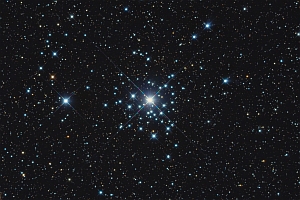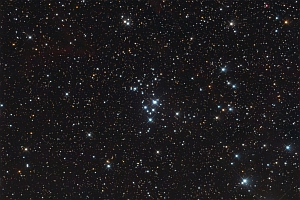Canis Major is the topic of Part #8 of our image presentation, where we want to share the results from our astrophotography-trip to the Hacienda Los Andes in Chile.
In this part we will show you some objects which you can find in the area of the constellations Canis Major (CMa), Monoceros (Mon) and Eridanus (Eri). Alpha Canis Majoris also known as Sirius is a double star system with a visual apparent magnitude of -1,46. It is the brightest star (system) in the earth's night sky. Sirius A is about twice as massive as our Sun and approximately 25 times more luminous. With an age of about 240 million years Sirius is one of the younger star systems. Sirius is also known colloquially as the "Dog Star" - reflecting its prominence in its constellation Canis Major (Greater Dog).
M41 (or NGC 2287) is an open cluster in the constellation Canis Major and lies about four degrees almost exactly south of Sirius. The cluster itself covers an area around the size of the full moon and contains about 100 stars including several red giants. NGC 2362 is another nice open cluster in the constellation Canis Major. Its brightest star is Tau Canis Majoris and therefore it is sometimes called the Tau Canis Majoris Cluster. NGC 2362 has a distance of 4500 Ly and is relatively young with an age of 4-5 million years. The open cluster NGC 2367 is also located in the constellation Canis Major and is embedded in the faint emission nebula LBN 1054. Near the top right corner of our image of NGC 2367 you can find a small reddish planetary nebula. It is PN M 1-12, which was discovered by Minkowski in 1946.
NGC 1808 is a barred spiral galaxy, located about 40 million light-years away in the southern constellation Columba. NGC 1808 is distinguished by a peculiar and complex nucleus, an unusually warped disk, and strange flows of hydrogen gas out from the central regions. The galaxy's center is the hotbed of vigorous star formation. NGC 2280 is a large spiral galaxy that lies about 75 million light-years away towards the constellation of Canis Major. This galaxy, that is thought to be similar in shape and size to our own Milky Way galaxy, is the dominant member of the NGC 2280 Group of galaxies. With vdB 96 we also have a small but bright reflection nebula in constellation Canis Major.









